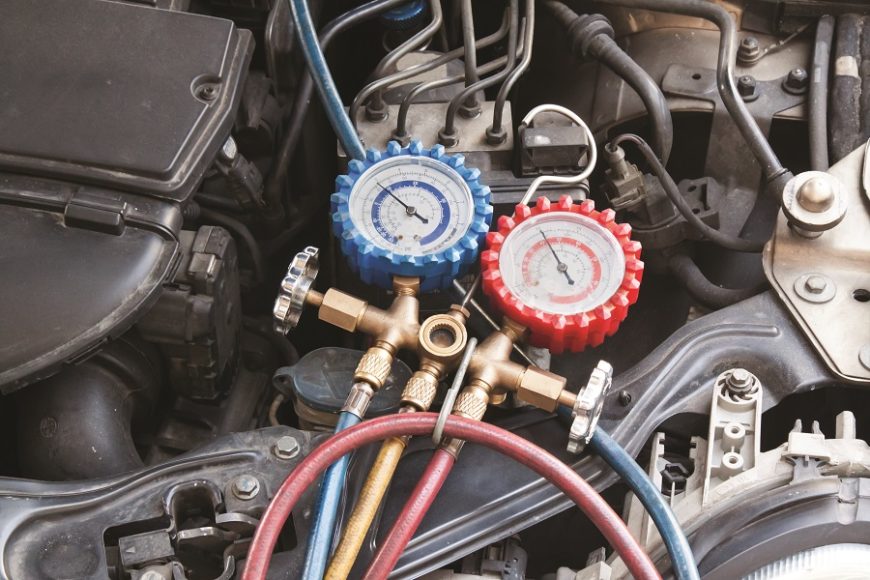To diagnose your car, you can start by using an OBD-II scanner to check for trouble codes. For a more accurate diagnosis, you may need to consult a qualified mechanic or take your car to a professional auto shop.
Diagnosing your car is an essential step in identifying and resolving any potential issues or malfunctions. By following these steps, you can ensure that your vehicle is in good working condition and address any problems promptly, preventing further damage and potential safety hazards.
Taking care of your car’s diagnostic needs can save you time, money, and stress in the long run.

Credit: www.jdpower.com
The Basics Of Car Diagnosis
Common Symptoms Of Car Problems
When your car shows specific signs, it may be signaling an underlying issue:
- Strange noises or vibrations
- Leaks under the vehicle
- Dashboard warning lights
- Irregular engine performance
- Unusual odors from the engine
Importance Of Timely Diagnosis
Addressing car issues promptly is crucial to prevent further damage and ensure safety:
- Enhances vehicle longevity
- Reduces repair costs
- Prevents breakdowns and accidents

Credit: www.autozone.com
Diagnosing Car Issues
When your car starts acting up, it can be frustrating and stressful. However, diagnosing car issues doesn’t have to be a daunting task. By following a few simple steps, you can pinpoint the problem and get your car back on the road in no time. In this article, we will explore two common methods for diagnosing car issues: using diagnostic tools and conducting a visual inspection and testing. Let’s get started!
Using Diagnostic Tools
One of the most effective ways to diagnose car issues is by utilizing diagnostic tools. These tools are specifically designed to communicate with the computer systems in your car, providing valuable information about any potential problems. Here are a few types of diagnostic tools that can help you diagnose car issues:
- On-board diagnostic (OBD) scanners: These handheld devices plug into the OBD port of your car, allowing you to retrieve error codes and data from your car’s computer system. By analyzing these codes, you can determine the source of the problem.
- Code readers: Similar to OBD scanners, code readers provide access to error codes. However, they may have fewer functionalities compared to advanced diagnostic tools.
- Multimeters: A multimeter is an essential tool for diagnosing electrical issues in your car. It allows you to measure voltage, resistance, and continuity, helping you identify faulty electrical components.
| Diagnostic Tool | Functionality |
|---|---|
| OBD Scanner | Provides detailed error codes and data |
| Code Reader | Basic access to error codes |
| Multimeter | Measures voltage, resistance, and continuity |
Visual Inspection And Testing
Alongside diagnostic tools, a visual inspection and testing play a crucial role in diagnosing car issues. This method allows you to visually examine and test various components of your car for signs of damage or malfunction. Follow these steps to conduct a thorough visual inspection and testing:
- Look for any visible signs of wear or damage on the exterior and interior of your car, such as dents, leaks, or loose connections.
- Check the fluid levels, including oil, coolant, brake fluid, and power steering fluid. Low fluid levels can indicate a problem with your car’s system.
- Inspect the tires for any signs of uneven wear, bulges, or punctures. Uneven wear patterns can indicate alignment or suspension issues.
- Test the car’s lights, including the headlights, taillights, brake lights, and turn signals to ensure they are functioning correctly.
- Listen for any unusual noises when starting the car, accelerating, braking, or turning. Unusual noises can indicate problems with the engine, brakes, or suspension.
- Check for any warning lights on the dashboard. These lights can provide valuable information about specific issues with your car.
By utilizing diagnostic tools and conducting a visual inspection and testing, you can effectively diagnose car issues and take the necessary steps to fix them. Remember, if the problem persists or if you’re unsure about the diagnosis, it’s always best to consult with a professional mechanic.
Understanding Car Diagnostic Codes
When your car starts behaving strangely, it can be perplexing. However, modern vehicles often come equipped with a sophisticated system that helps pinpoint the cause of the problem – Car Diagnostic Codes. These codes are a language that your car’s computer speaks, providing valuable information about the issues that need attention.
What Are Diagnostic Trouble Codes (dtcs)?
Diagnostic Trouble Codes (DTCs) are alphanumeric codes that act as a communication tool between your car’s onboard computer and a diagnostic scanner. These codes represent specific issues or conditions that have been detected within the vehicle’s systems. Each code corresponds to a particular problem area, making it easier to identify and resolve the issue.
These codes are generated when the vehicle’s sensors detect abnormal readings or malfunctions in various components, such as the engine, transmission, or emissions system. By accessing the codes, you can narrow down the problem area and work towards a solution.
Interpreting Dtcs
Understanding and interpreting the DTCs can give you valuable insights into what is happening under the hood of your car. To begin the diagnosis process, you’ll need an OBD-II (On-Board Diagnostic) scanner. This portable device connects to your car’s OBD-II port and retrieves the codes stored in the computer’s memory.
Here’s a step-by-step guide to interpreting DTCs:
- Connect your OBD-II scanner to the OBD-II port, typically found under the dashboard or steering wheel of your car.
- Turn on the ignition without starting the engine, ensuring power is supplied to the scanner.
- Access the scanner’s menu and choose the “Read Codes” or “Diagnostic Trouble Codes” option.
- The scanner will retrieve the codes and display them on its screen.
- Note down the codes and refer to the scanner’s user manual or an online database to understand their meaning.
- Once you have identified the problem indicated by the code, you can proceed with the necessary repairs or consult a professional mechanic for further assistance.
By correctly interpreting the DTCs, you can save time, money, and frustration. Instead of blindly troubleshooting, the codes provide a clear starting point for resolving the issue.
Remember, it is important to address any underlying issues indicated by the codes promptly. Ignoring them can lead to more serious problems and potential damage to your vehicle.
Common Car Problems And Diagnoses
It can be frustrating when your car suddenly experiences issues. Understanding the common car problems and their diagnoses can save you time and money.
Engine Related Issues
Your car’s engine is the heart of the vehicle. Identifying engine-related issues is crucial for proper functioning.
- Engine Misfire: Check for spark plugs, ignition coils, or fuel injectors.
- Overheating: Inspect coolant levels, thermostat, or water pump.
- Strange Noises: Look for loose belts, worn bearings, or faulty valves.
Electrical System Problems
The electrical system in your car controls various components. Understanding common electrical issues is essential.
- Battery Not Charging: Check alternator, battery connections, or voltage regulator.
- Faulty Lights: Inspect bulbs, fuses, or wiring connections.
- Power Window Failure: Look for faulty switches, wiring issues, or motor problems.
Diy Vs. Professional Diagnosis
When it comes to diagnosing car issues, you have the option of tackling the problem yourself or seeking professional help. Both DIY and professional car diagnosis have their own set of advantages, and knowing when to choose one over the other can save you time and money. In this section, we will explore the factors to consider when deciding between DIY and professional car diagnosis.
When To Diagnose Your Car Yourself
Diagnosing your car yourself can be a feasible option for simpler issues that do not require advanced tools or technical expertise. If you possess basic mechanical knowledge and are comfortable working on cars, you can attempt to diagnose and fix minor issues such as changing a fuse, replacing a light bulb, or checking fluid levels.
Benefits Of Professional Car Diagnosis
Seeking professional car diagnosis can provide several benefits, especially when dealing with complex or hard-to-identify problems. Professional mechanics have access to specialized diagnostic equipment and tools, allowing them to pinpoint issues accurately and efficiently. Additionally, their training and experience enable them to diagnose potential problems before they escalate, saving you from costly repairs in the long run.

Credit: www.youtube.com
Frequently Asked Questions For How To Diagnose My Car
How Do I Run A Diagnostic Test On My Car?
To run a diagnostic test on your car, use an OBD-II scanner to connect to the car’s onboard computer. Follow the instructions to scan for error codes and analyze the results. Refer to the scanner’s manual for guidance on interpreting the codes, or seek professional help for complex issues.
How Do You Manually Diagnose A Car?
To manually diagnose a car, use an OBD-II scanner to check for error codes. Inspect visually for any visible issues like leaks or damage. Test drive the vehicle to observe performance. Listen for strange noises and pay attention to unusual smells.
Use a multimeter to check electrical components.
How Much Is A Diagnostic Test On A Car?
A diagnostic test for a car typically costs around $50 to $200, depending on the complexity of the problem. It helps identify issues with the vehicle’s systems, such as the engine, transmission, or electrical components.
Can I Diagnose My Car With My Phone?
Yes, you can diagnose your car with your phone. There are apps available that can connect to your car’s diagnostic system and provide you with information on any issues or error codes.
How To Identify Strange Car Sounds?
To diagnose strange sounds, pay attention to where the noise is coming from and its frequency.
What Are Common Car Diagnostic Tools?
Common tools include OBD-II scanners, multimeters, diagnostic code readers, and ignition testers.
How Can I Check My Car’s Engine For Issues?
Check for overheating, unusual smells, and unusual sounds from the engine to identify potential issues.
Conclusion
Taking the time to diagnose your car can save you time and money. Remember to start with simple checks first, and don’t hesitate to seek help if needed. Understanding your car’s symptoms is essential for effective troubleshooting. Empower yourself with knowledge and make informed decisions for your vehicle’s well-being.
Happy diagnosing!
- How to Test Ac Compressor Clutch: Mastering the Ultimate AC Diagnosis - May 17, 2024
- How Does Water Infiltrate a Jet Ski Engine? - May 17, 2024
- How to Master Code Reading with Autozone’s Reader: Unlock Your Car’s Secrets - May 17, 2024



